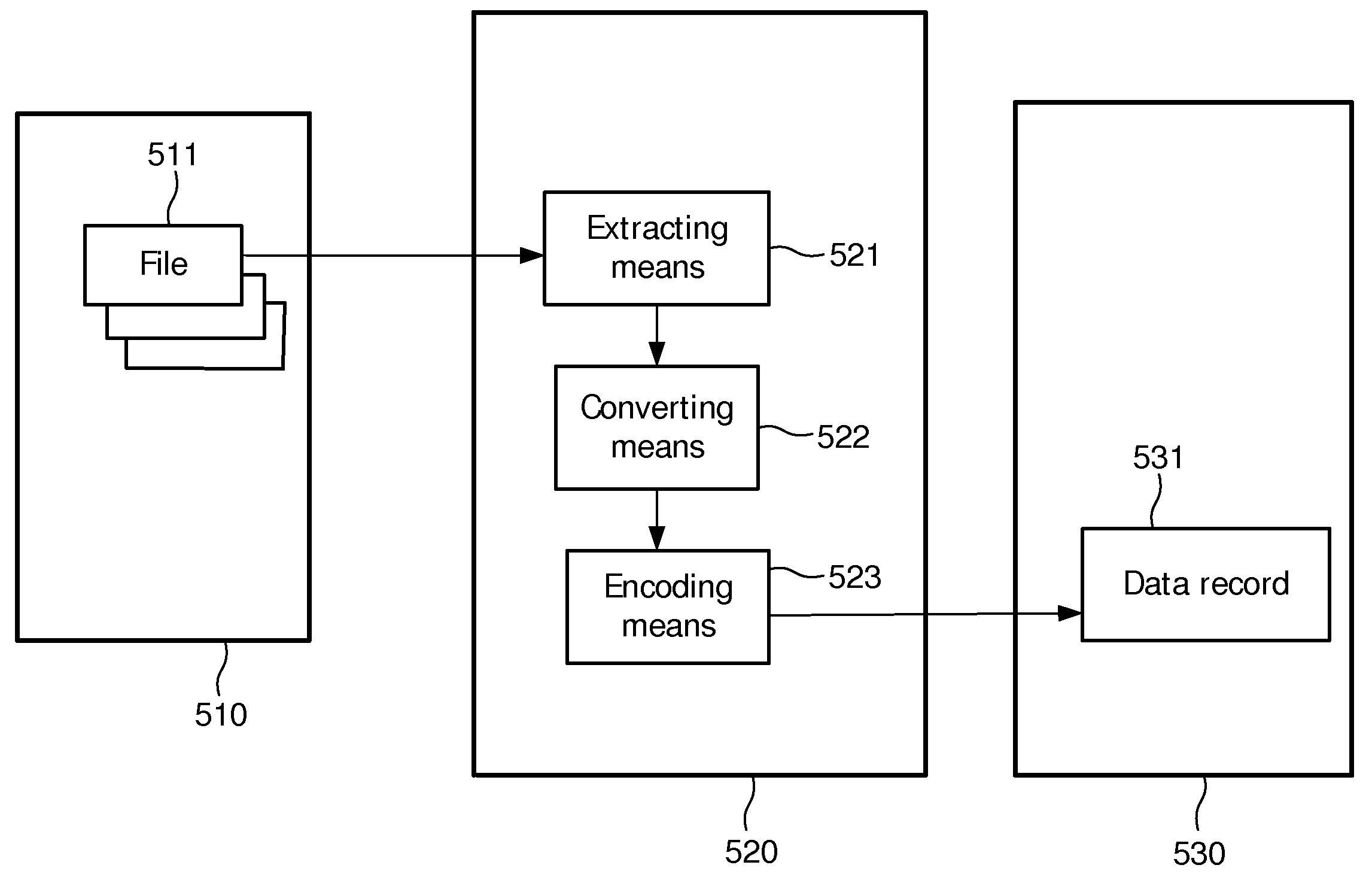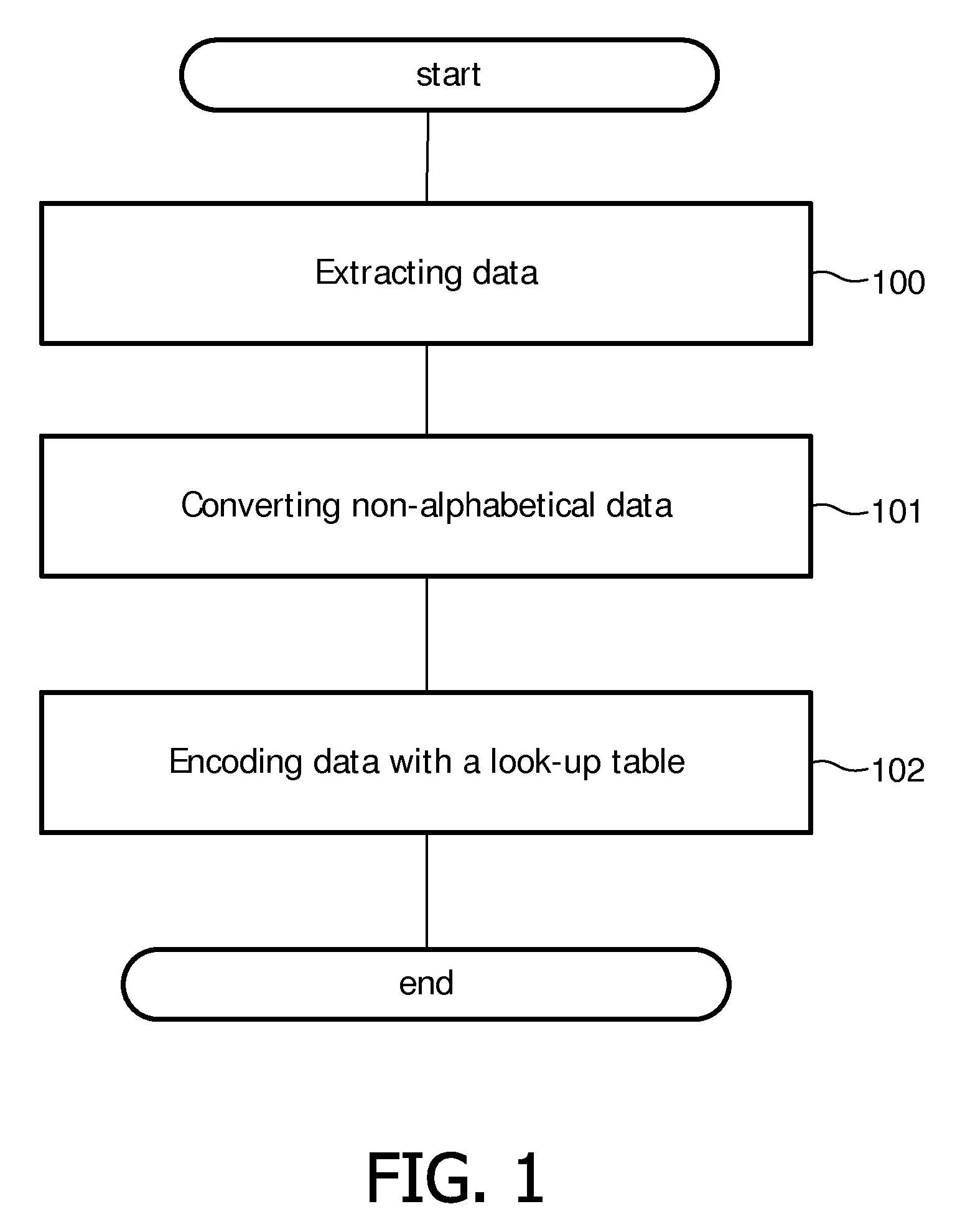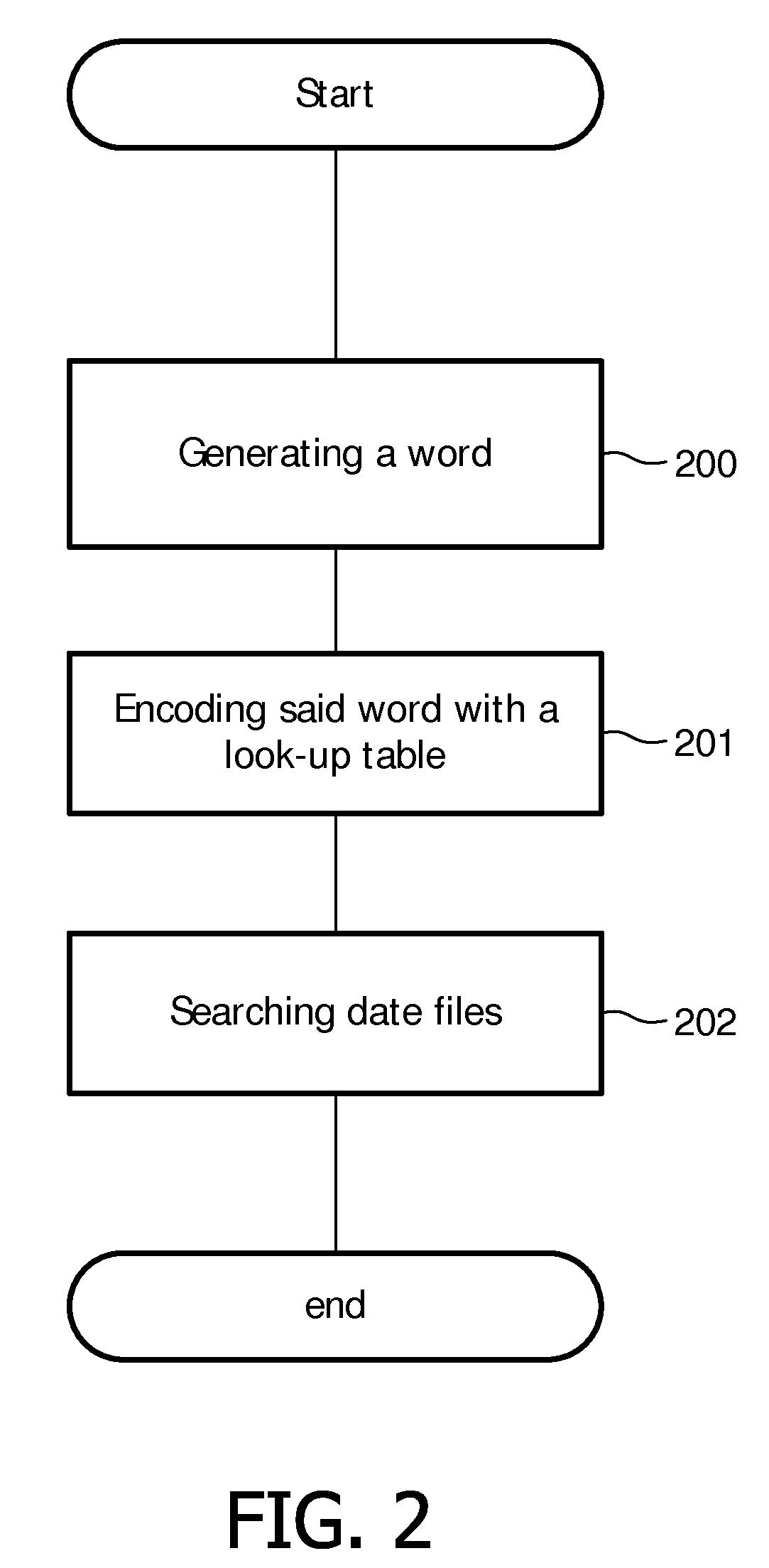Method and Apparatus for Manipulating Data Files
- Summary
- Abstract
- Description
- Claims
- Application Information
AI Technical Summary
Benefits of technology
Problems solved by technology
Method used
Image
Examples
Embodiment Construction
[0025]FIG. 1 shows a flowchart of the method for encoding a non-alphabetical data file according to the invention.
[0026]The invention provides a method of encoding a data file stored in a storage unit, said method comprising the step 100 of extracting a non-alphabetical data, and said data being associated with said file. When a new data file is stored in a data file storage unit, the data associating with the file is extracted in step 100, wherein the data may comprise keywords of the file or metadata of the file, e.g. ID3 tags of an MP3 file, or Exif data of a picture. For example, with a data file corresponding to a Chinese song titled and stored in an MP3 player, text word is extracted by step 100.
[0027]The method also comprises the step 101 of converting said non-alphabetical data into a word in using symbols taken from a first set of symbols. Because the extracted data may be alphabetical or non-alphabetical (such as Chinese, Korean and Japanese), the non-alphabetical data i...
PUM
 Login to View More
Login to View More Abstract
Description
Claims
Application Information
 Login to View More
Login to View More - R&D
- Intellectual Property
- Life Sciences
- Materials
- Tech Scout
- Unparalleled Data Quality
- Higher Quality Content
- 60% Fewer Hallucinations
Browse by: Latest US Patents, China's latest patents, Technical Efficacy Thesaurus, Application Domain, Technology Topic, Popular Technical Reports.
© 2025 PatSnap. All rights reserved.Legal|Privacy policy|Modern Slavery Act Transparency Statement|Sitemap|About US| Contact US: help@patsnap.com



